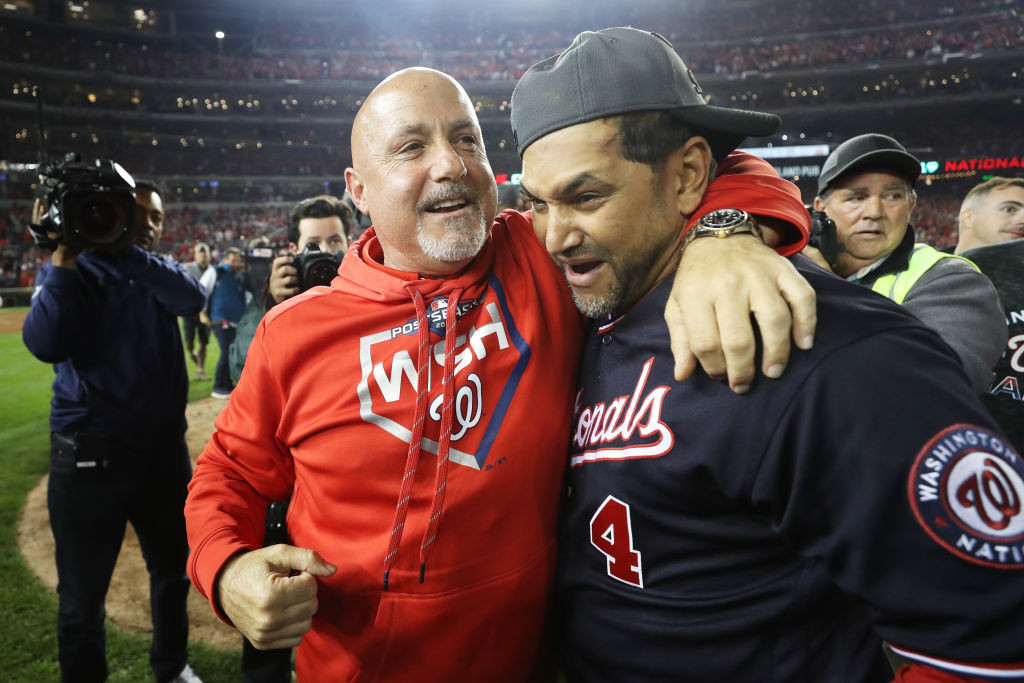Beginning on Trade Deadline Day 2021, and repeated countless times since, Mike Rizzo has summed up the Nationals’ rebuilding efforts with some variation of the same line:
“We’ve done this before. We know what we’re doing.”
Indeed, the first stretch of Rizzo’s 15-year tenure as general manager saw the organization tear down its existing roster, emphasize the drafting and developing of a new crop of young players, watch that group reach the big leagues and then supplement it with free agents. Thus did the Nationals go from 59 wins in 2009 to 69 wins in 2010 to 80 wins in 2011 to 98 wins and the first of four division titles in 2012.
The road map has always been there, and it’s only been natural to try to figure out how this current rebuild will mirror that one.
There are obvious comparisons. The Nats bottomed out in 2022, just as they did in 2009. And then they took a step forward in 2023, just as they did in 2010.
The logical conclusion? The 2024 season should resemble the 2011 one, with the team hovering around the .500 mark. Then it should all come together beautifully in 2025, just as it did in 2012.
Internally, that’s the way most club executives seem to view the situation. The Nationals probably aren’t ready to win quite yet. They need one more year of development before that is likely to happen.
But it should be noted what Rizzo did following the 69-win 2010 season. He signed Jayson Werth to the largest contract in club history (at the time), and he also signed Adam LaRoche to a two-year deal, injecting a young roster with two proven veteran everyday players.
Is a comparable dive back into free agency coming this winter?
“I think the players will let you know that by their performance on the field,” Rizzo said when asked last week how he’ll know when it’s time to make a big-splash signing. “And when you think that it’s time to put your foot on the gas and kind of go for it, I think that we have an experienced front office in that regard, an experienced coaching staff that will all have input on what we do in the offseason to kind of expedite that.”
The 2023-as-2010 comparison is an obvious one to make, but there are some notable differences in those two teams.
The 2010 lineup (average age: 29.1) was much older than the 2023 lineup (26.8) and featured a host of 30-something hitters (Ivan Rodriguez, Adam Dunn, Adam Kennedy, Cristian Guzman, Josh Willingham, Willie Harris) who were long gone by the time the 2012 breakthrough took place.
The 2010 pitching staff had the same average age as the 2023 staff (28.0), but the only starters from that team still in the regular rotation in 2012 were Stephen Strasburg and Jordan Zimmermann (who collectively pitched only 19 games due to their respective Tommy John surgeries). Most of the holdovers (Drew Storen, Tyler Clippard, Sean Burnett, Craig Stammen) were relievers.
The Nationals believe they have more legitimate building blocks on the current major league roster now than they did back then: Keibert Ruiz, CJ Abrams, Lane Thomas, MacKenzie Gore, Josiah Gray, Jake Irvin, Jackson Rutledge, Kyle Finnegan, Hunter Harvey, Tanner Rainey.
In 2011, the Nats saw Wilson Ramos and Danny Espinosa join Ryan Zimmerman, Ian Desmond and Michael Morse in the everyday lineup, saw a healthy Zimmermann break through into the consistently dominant starter he would become and saw Strasburg return in September from his elbow surgery.
Then the following winter, they traded for Gio Gonzalez, signed Edwin Jackson and gave Ross Detwiler a chance to become a full-time starter, all of it coming together to create the best rotation in baseball. And three weeks into the 2012 season, they promoted former No. 1 draft pick Bryce Harper and watched him have an immediate impact during a Rookie of the Year season. The rebuild was complete.
The current Nationals believe they’ve already got future stars in their farm system, many of them on the cusp of reaching the majors sometime in 2024, in James Wood, Dylan Crews and Brady House.
If everyone pans out as hoped – a huge if, of course – there will be far more young talent already in place at the end of the 2024 season than there was at the end of the 2011 season. Which, in turn, might shape the front office’s approach to free agency.
There’s another key factor to consider when projecting how soon the Nats will be ready to contend again: The size of the playoff field.
Only four teams from each league made the postseason in 2011, with three division winners joined by one wild card. Major League Baseball added a second wild card participant in 2012, then a decade later added a third, creating the current format.
Had that current format been in place in 2011, the 86-win Giants would’ve qualified as the final wild card in the NL. The Nationals, who never really thought of themselves as being in the race, would’ve finished only 5 1/2 games out.
A pair of 84-win teams made the playoffs this year in the NL in the Marlins and Diamondbacks, the latter of which just swept the Brewers to advance to the NLDS.
Point is, it’s never been easier to reach the postseason. That may not change the Nationals’ approach to free agency this winter, but if the stars align properly, it just might change their approach to the trade deadline next July.
